|
|
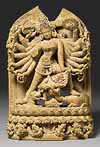 |
==Goddess-worship
(c.600 on), as the Met
notes: "The rise of the shakti cult in the east introduces worship of
the
female principle to Indian religions. The cult is thought to derive
from
ancient mother-goddesses and is closely associated with devotion to
Shiva.
The glory of the goddess is first extolled in text in the
"Devimahatmaya,"
a portion of the "Markandeya Purana" (5th-7th c.)." An excellent
presentation
on the cult of the Goddess: *Sackler
Gallery*. |
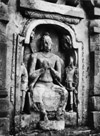 |
==Harshavardhana
of Kanauj (r.c.606-47) builds a large kingdom that eventually includes
most of northern and eastern India, until he is defeated by the
Chalukyas
in Malwa (Central India). Renowned for his patronage of Buddhism and
scholarship,
Harsha is also a Sanskrit poet himself. Under his protection, Nalanda
becomes
an internationally known center for Buddhist travelers and monks. He
inspires
the "Harsha-charita," a laudatory Sanskrit work by Bana: *MSSU*. |
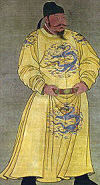 |
==Harsha
and Tai-Tsung get along extremely well (641): Harsha
sends
an envoy to the Chinese emperor Tai-tsung (4.626-49) (*silk
road*), and establishes the first diplomatic relations between
India
and China. Thereafter, Tai-tsung sends ambassadors to Harsha's court on
at least two occasions, in 643 and 647. The second time, the
ambassador,
Wang Hsuan-tse, finds Harsha dead and the kingdom in the hands of the
unpopular
Arunashva. He gathers reinforcements in Tibet, Nepal, and Assam,
captures
Arunashva, and carries him off to China, where Arunashva is detained at
the Tang court till his death. |
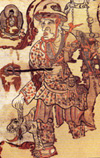 |
==Hsuan
Tsang and his travels (627-43): The Chinese Buddhist
scholar
Hsuan Tsang (Xuan Zang) travels through India, seeking Buddhist
manuscripts
to take home and translate into Chinese. He is welcomed by Harsha, and
most of what we know about Harsha comes from him. He studies at Taxila,
and also spends much time at Nalanda. When he returns to China with
over
600 Sanskrit manuscripts, he writes an account of his travels,"Record
of
Western Lands," an invaluable source of information about South and
Central
Asia (*wiki*). |
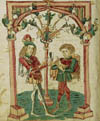 |
==Barlaam
and Joasaph (c.630?): A collection of European folk
fables
translated from the Greek, this text is apparently based on versions of
the Jatakas (*IGNCA*),
the stories of the Buddha's earlier births. "Joasaph" is probably a
rendering
of "Bodhisattva": one translation: *Univ.
of California*; another version: *sacred
texts*; see also *Project
Gutenberg*. |
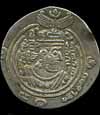 |
==The
first coins of Muslim rulers (c.652-60): As Islam (*Univ.
of Georgia*) develops from the 7th century onwards, the Arabs in
the
coastal South Asian trading communities tend to be Muslims. As early as
the 8th century, there are references to trading communities of Muslim
Arabs as far east as the Bay of Bengal, and as far south as Sri Lanka. |
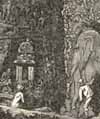 |
==Mamallapuram
(c.630-728), also called "Mahabalipuram," is founded by the Pallavas,
who
rule in Kanchipuram (itself a temple center: *DSAL*;
*Berger*),
in order to commemorate their defeat of the Chalukyas. As a seaport
town,
Mamallapuram plays an important role in transmitting Indian culture to
Southeast Asia. It is also known for its unique and spectacular
bas-relief
sculptures and the "Shore Temples." Images: *DSAL*;
*Berger*;
discussion: *art
and archaeology*. [*Routes*] |
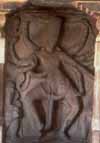 |
==Aihole,
in Bijapur, Karnataka (c.634-800's): Aihole offers a mixture of
Buddhist
and Hindu temples of all types that keeps getting richer over several
centuries,
with the best ones from the early Chalukya period and later. Images: *DSAL*;
*Berger*.
Discussion: *art
and archaeology*; *India
Nest*. |
 |
==Ellora
(c.650-800). Rock-cut temples dedicated to Shiva are built at Ellora
and
Aurangabad in Maharashtra; they become the high points of a site that
is
full of Buddhist and Jain rock-cut temples as well. Images: *DSAL*;
*Berger*.
Ellora marks the supreme level of achievement of early medieval
rock-cut
temples. Discussion: *art
and archaeology*. [*Routes*]. |
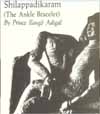 |
==Tamil
literature flourishes (especially c.600–700): Tamil
poetry,
music, and art flourish, and the classic Tamil epic poems
"Shilappadikaram"
and "Manimekalai" are composed (*wiki*).
|
|
|











